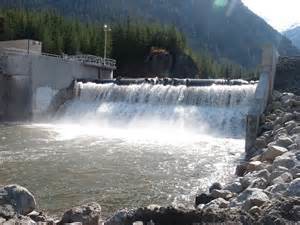Govt. focusing on construction of reservoir-based hydropower projects and transmission lines

Ramesh Lamsal / Kathmandu, Aug 15: The government, focusing on the long-term development of the energy sector in the country, has paid attention to the construction of reservoir-based hydropower projects and the expansion of transmission lines.
Recommendation to construct a reservoir-based hydropower project and extension of the period of the power purchase agreement (PPA) to 50 years among others has been put forward for energy security by the ‘Report on the policy arrangement regarding power purchase and sale -2080 BS’.
The report was prepared by a task force coordinated by Sanjeev Dev, Joint Secretary at the Ministry of Energy, Water Resources and Irrigation.
Joint Secretary Dev shared that the report proposed that the PPA period be extended up to 50 years in consideration of investment and security of the energy sector.
The private sector, however, has not invested in any of the semi-reservoir-based and reservoir-based hydropower projects yet. A majority of the hydropower projects demanded by PPA are based on a run-of-river hydropower project.
Such hydropower projects which operate at full capacity during monsoon are producing electricity at low capacity in winter. Hence, the incumbent government laid its attention on the development of semi-reservoir and reservoir-based hydropower projects.
There’s a question on the side of the government regarding how much time is to be given regarding the PPA period. The electricity management authority needs to have certainty about how much electricity would be added to the national grid in which year.
The Monetary Policy unveiled by the Nepal Rastra Bank in the current fiscal year stated that the scope of investment in the energy sector could not be expanded and thus the private sector demanded creating an easy and enabling environment for investment for a big number of entrepreneurs being attracted towards the construction of hydropower projects.
Independent Power Producers’ Association, Nepal (IPPAN) has demanded that the deadline for projects with a capacity of up to 100-MW should be determined for three years after the date of the completion of PPA and four years for projects between 100 and MW-500 MW for the same.
Similarly, the fiscal management period of projects above 500-MW should be determined for five years, asked the IPPAN. At present, most of the projects invested by the private sector in the country are of a capacity of 100 MW.
The 10th review meeting of the India-Nepal Line of Credit (LOC) held between Nepal and India on August 10 this year decided to accelerate the expansion of the 400-KV Dhalkebar-Bhittamod transmission line as well as other electricity transmission infrastructures.
Similarly, the Indian government has agreed to invest around USD 679.8 million under LOC for the construction of the Bheri Corridor, Nijgadh-Inaruwa, Gandak-Nepalgunj transmission lines and sub-station of these transmission lines.
The government of Nepal is making necessary preparation to construct different projects including Budhigandaki, Dudhkoshi, and Upper Arun from the current fiscal year for energy security and to fulfil the demand for power during the winter season.
Prime Minister Pushpa Kamal Dahal ‘Prachanda’ during the meeting with office bearers of Gandaki rural municipality last Monday expressed commitment to lay the foundation stone for the Budhigandaki hydel project soon addressing the demands of locals.
The Nepal Electricity Authority (NEA) is preparing to implement the Dudhkoshi Hydropower Project while the financial resources are being searched for the Upper Arun. The World Bank has expressed its interest in investing in the Upper Arun.
The Report has also advised the government to not apply a queue system for projects up to 10 megawatts for implementation. However, the document is yet to be endorsed by the NEA Board of Directors.
Though the private sector has welcomed most of the provisions in the report, Independent Power Producers’ Association, Nepal (IPPAN) has expressed its reservations over some matters in the report.
The deadline for fiscal management and the deadline for the completion of the construction since the signing of the Power Purchase Agreement (PPA) is one of the major concerns in the development of the hydropower project.
The government of Nepal has set a target of generating 15,000 megawatts of electricity by 2028. Nepal and India had, during Prime Minister Prachanda’s latest visit to India, agreed that India would purchase 10,000 megawatts of electricity from Nepal in the next ten years.
Minister for Energy, Water Resources and Irrigation Shakti Basnet said that efforts were underway as per the government’s plans to promote domestic power consumption. The government through its policies and the budget has owned a policy of promoting the use of electric cooking stoves and electric vehicles. RSS
